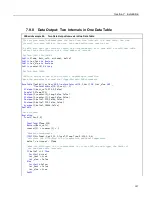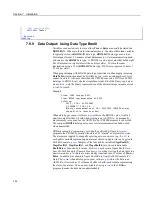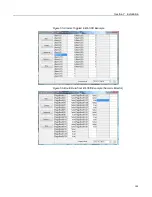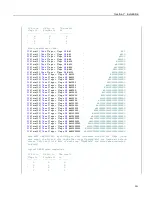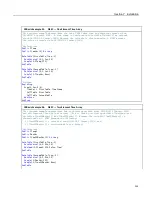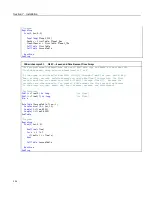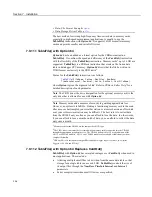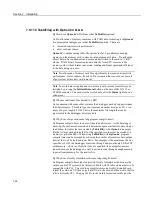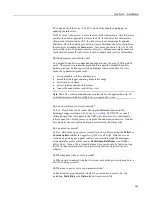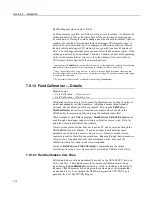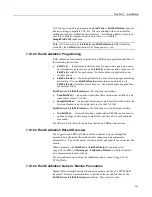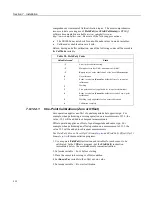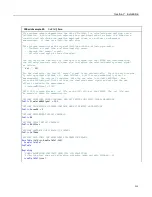
Section 7. Installation
7.9.11.5 TableFile() with Option 64 Q & A
Q:
How does
Option 64
differ from other
TableFile()
options?
A:
Pre-allocation of memory combines with TOB3 data format to give
Option 64
two principal advantages over other
TableFile()
options. These are:
•
increased runtime write performance
•
short card eject times
Option 64
is unique among table file options in that it pre-allocates enough
memory on the memory card to store an interval amount of data
1
. Pre-allocation
allows data to be continuously and more quickly written to the card in ≈1 KB
blocks. TOB3 binary format copies data directly from CPU memory to the
memory card without format conversion, lending additional speed and efficiency
to the data storage process.
Note
Pre-allocation of memory card files significantly increases run time write
performance. It also reduces the risk of file corruption that can occur as a result
of power loss or incorrect card removal.
Note
To avoid data corruption and loss, memory card removal must always be
initiated by pressing the
Initiate Removal
button on the face of the NL115 or
CFM100 modules. The card must be ejected only after the
Status
light shows a
solid green.
Q:
Why are individual files limited to 2 GB?
A:
In common with many other systems, the datalogger natively supports signed
four-byte integers. This data type can represent a number as large as 231, or in
terms of bytes, roughly 2 GB. This is the maximum file length that can be
represented in the datalogger directory table.
Q:
Why does a large card cause long program compile times?
A:
Program compile times increase with card and file sizes. As the datalogger
boots up, the card must be searched to determine space available for data storage.
In addition, for tables that are created by
TableFile()
with
Option 64
, an empty
file that is large enough to hold all of the specified records must be created (i.e.,
memory is pre-allocated). When using
TableFile()
with
Option 64
, program
compile times can be lessened by reducing the number of records or data-output
interval that will be included in each file. For example, if the maximum file size
specified is 2 GB, the datalogger must scan through and pre-allocate 2 GB of CF
card memory. However, if smaller files are specified, then compile times are
reduced because the datalogger is only required to scan through enough memory
to pre-allocate memory for the smaller file.
Q:
Why does a freshly formatted card cause long compile times?
A:
Program compile times take longer with freshly formatted cards because the
cards use a FAT32 system (File Allocation Table with 32 table element bits) to be
compatible with PCs. To avoid long compile times on a freshly formatted card,
format the card on a PC, then copy a small file to the card, and then delete the file
(while still in the PC). Copying the file to the freshly formatted card forces the
208
Summary of Contents for CR1000
Page 2: ......
Page 4: ......
Page 6: ......
Page 32: ......
Page 36: ......
Page 38: ......
Page 40: ......
Page 60: ...Section 4 System Quickstart Figure 16 PC200W View Line Graph 60 ...
Page 96: ......
Page 98: ...98 ...
Page 302: ......
Page 453: ...Section 8 Operation Figure 115 Using the Keyboard Display 453 ...
Page 456: ...Section 8 Operation Figure 118 Real Time Custom 456 ...
Page 457: ...Section 8 Operation 8 8 1 3 Final Memory Tables Figure 119 Final Memory Tables 457 ...
Page 458: ...Section 8 Operation 8 8 2 Run Stop Program Figure 120 Run Stop Program 458 ...
Page 460: ...Section 8 Operation Figure 122 File Edit 460 ...
Page 461: ...Section 8 Operation 8 8 4 PCCard Memory Card Display Figure 123 PCCard CF Card Display 461 ...
Page 478: ......
Page 506: ......
Page 536: ......
Page 636: ......
Page 642: ......
Page 644: ......
Page 676: ......
Page 677: ......




